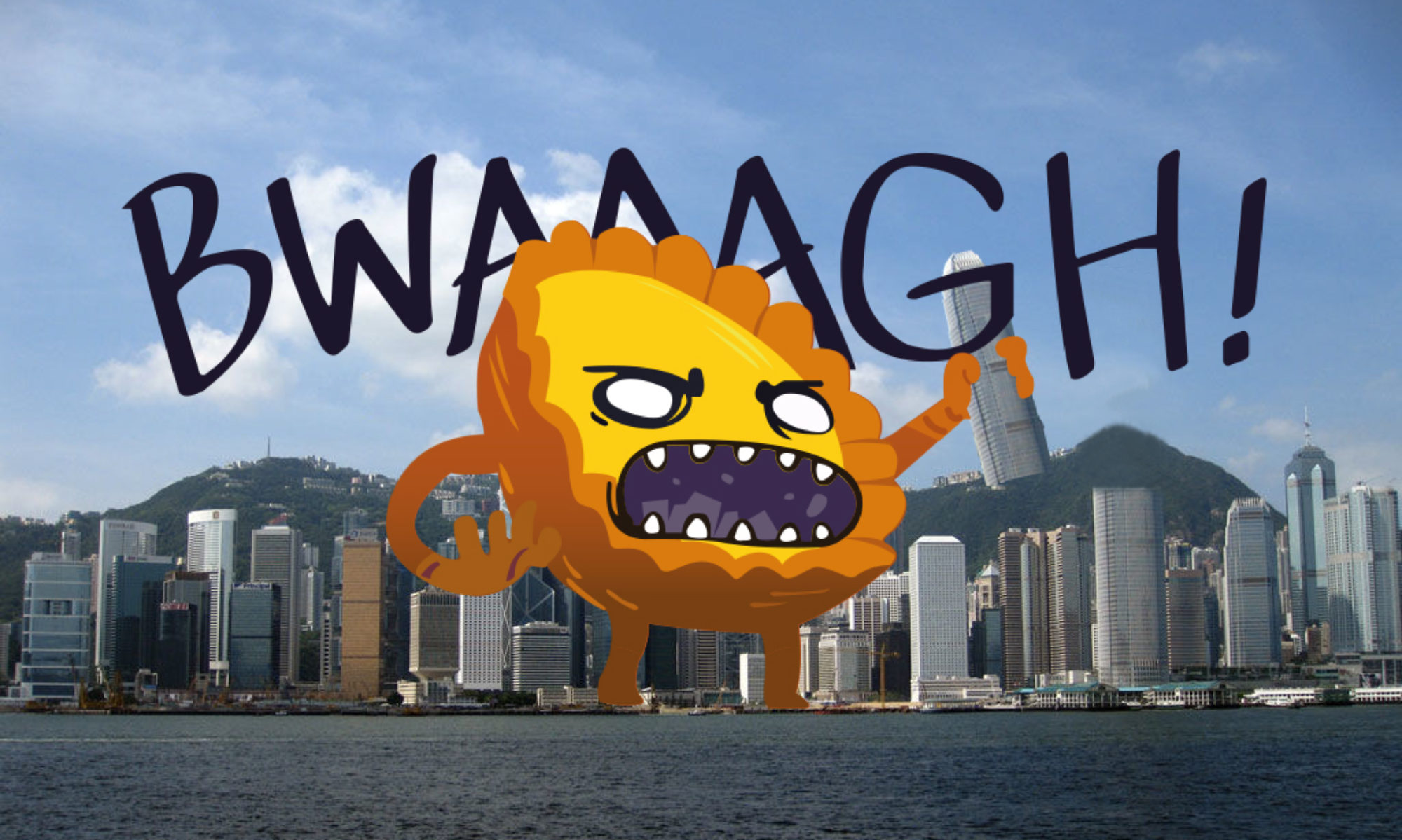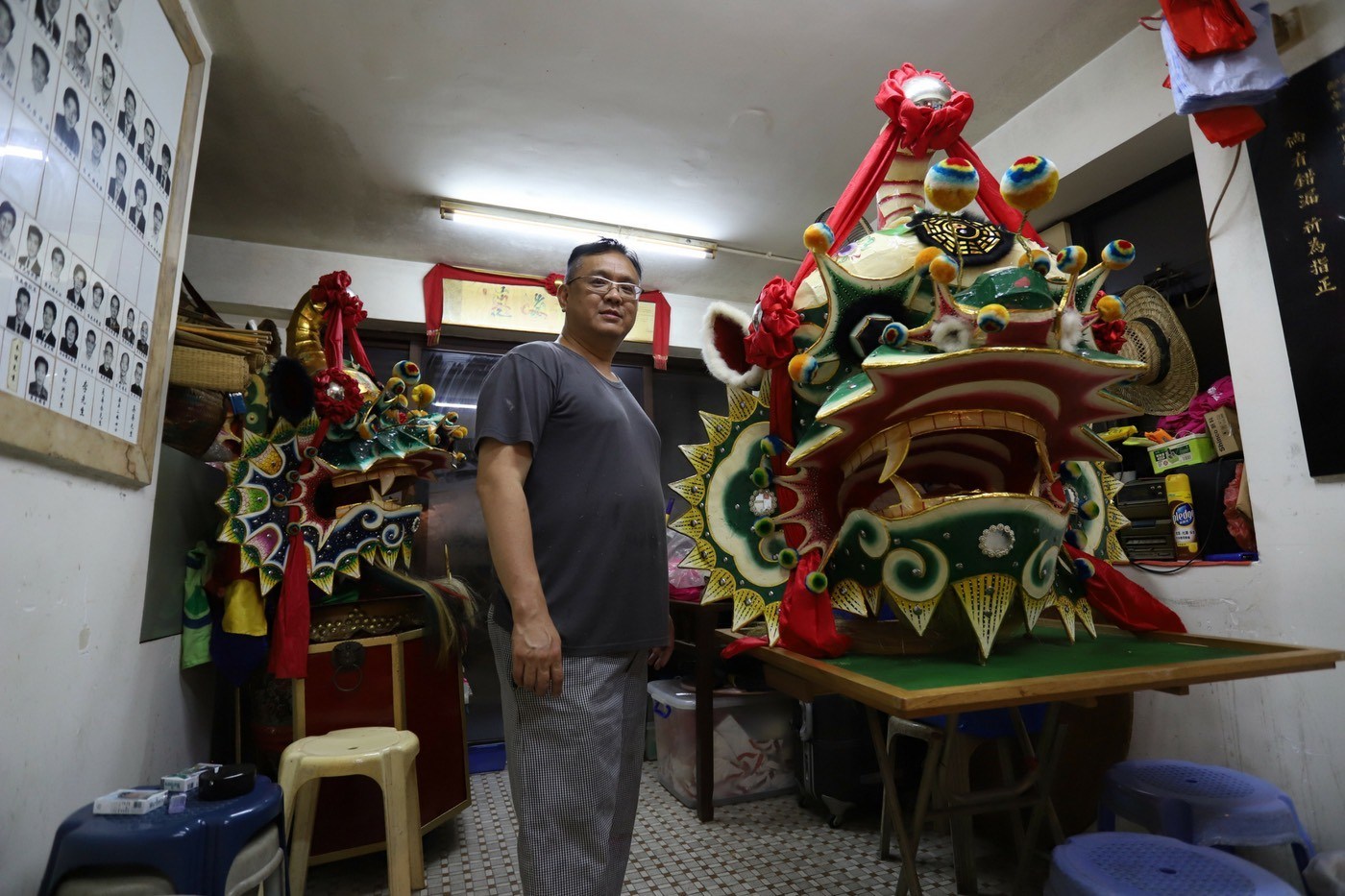Written by Billy Potts
This is the seventh in a series of articles in which we explore the imaginary creatures of Hong Kong, their makers and those that take part in their culture. The seventh cryptid in our fantastic menagerie is the ferocious-looking yet gentle-natured qilin, also known as the Chinese unicorn. This article was first published in Zolima City Mag
Ships strain at their moorings as storm clouds scud across the sky. Rain lashes across the window of a fast ferry battling towards the safe harbour of Peng Chau. On the island, the tree lined square in front of the ferry pier is quiet, free of the usual hubbub. Walking casually through the torrent, a lone figure garbed in loose grey clothing and yellow Crocs appears in the distance. This is Master Ringo Leung, revered paper craftsman. He has agreed to be a guide to the island’s cryptozoological fauna.

Leung was born on Peng Chau. With little to do in the peaceful village, children amused themselves with lion dancing. On the island lived a renowned paper craftsman, Master Lai Hung-cheung, who specialised in making qilins (kei4 leon4 麒麟), a mythical hooved creature. The young Leung spent many a day shadowing the old sifu, emulating his methods and learning to make qilins of his own.
Until 13 years ago, Leung ran a workshop in Sai Ying Pun where he made lions, dragons and qilins of all stripes. Today he is back on Peng Chau running his family’s tea house, Shing Hing Restaurant. He spends his mornings steaming sumptuous dim sum delicacies and devotes his afternoons to the creation of celestial creatures, of which the qilin is his speciality.

Qilins are Peng Chau’s apex cryptid. A chimera with the body of a deer, tail of an ox, hooves of a horse and scales on its body, the qilin defies zoological classification. It has either one or two horns and comes in a spectrum of colours depending on the culture that it comes from. The qilin is an animal of good omen. It is said to be so gentle that it walks with high, tentative steps in order to avoid treading on even the tiniest living creature. Qilins eat only what is already dead and will abstain from consuming even live grass. The appearance of a qilin foretells the birth or passing of a sage or the ascendance of an upright ruler.

Leung makes his way through the rain and ducks into a mahjong hall, the Hoi Luk Fung Association, where men watch football on television. Master Leung goes into the back and emerges with two qilins. These fearsome beasts hail from Leung’s ancestral hometown, Shanmei, and are known as Hoi Luk Fung qilins or suilins (seoi6 leon4 瑞麟). They are larger and fiercer looking than others of their kind. Their distinctive physiognomy includes small bats and dragon fish on their foreheads signifying good luck.

These phenotypes are a Peng Chau speciality that are unique to the island. “Amongst Hoi Luk Fung qilins, the ones with green faces and white horns are for showcasing power and skill in the martial arts, because they look fiercer,” says Leung. He presents the other qilin. “This gentler, colourful qilin with a gold horn is for venerating the gods.” These unicorns only appear on special occasions like a god’s birthday. “Where there are gods there are qilins!” Leung exclaims.

Qilins are always in the vanguard, keeping evil spirits at bay, ensuring safe passage for the procession, but a qilin would never appear at anything as base as a business opening. Such menial tasks fall to lions, who are lower in the hierarchy because they are carnivores.

Not far from the mahjong hall, above Shing Hing Restaurant, rain patters rhythmically on the the tin roof of Leung’s study. He leafs through old photographs scattered amidst skeletal lion frames. “We have at least seven or eight qilin designs,” he says. “But we’re only putting out a couple standard ones because people keep copying them.” Later that afternoon he ventures out to yet another association hall replete with a glory of unicorns. There Leung’s friend, Mr. Au, who has been a qilin dancer since childhood, shows the qilin’s evolution. He points to fading sepia photographs. One in particular features the former colonial administrator, Sir David Akers-Jones, but more importantly it captures a number of qilins in an older, more ornate style that would be unrecognisable today.

Aside from style, qilins are highly variable depending on locality and tradition. Leung specializes in the ferocious suilins of his Shanmei people, but he also creates green faced Dongguan qilins with black horns, and crimson faced Wai Dong qilins with gold horns. Both of those qilins belong to the Hakka people. Each of these qilin sub-species has a unique dance. While explaining, Leung suddenly leaps into action, his swift, precise movements belying his ungainly frame. He demonstrates each of the qilins’ dances in turn, from the fierce suilin’s wild, sweeping movements to the crouching, careful steps of the Hakka qilins.

Watching this athletic display brings to mind something said by a ninth generation Hakka qilin dancer, Lau Kam-tong of Hang Hau: this kind of dance is no mere performance. For the Hakka, it was developed alongside martial arts to defend their villages from marauding pirates. According to Lau the low stances of the qilin dance denote respect however it’s plain to see how this show of martial strength also demands that respect.


As the rain continues, Leung spends the better part of the afternoon talking about qilins, elucidating on their curious characteristics and gentle virtues. Moving from the association hall to a restaurant, he delves into his cryptid building career and quiet island life, slurping down a bowl of fishball noodles. Walking through the streets of Peng Chau, neighbours greet Leung and he beams in return, the master craftsman embodying the genial spirit of the qilin.

